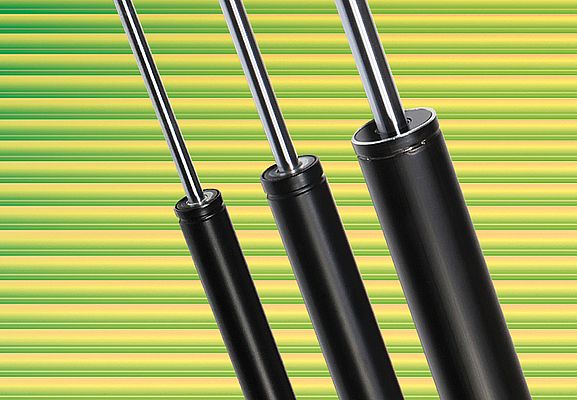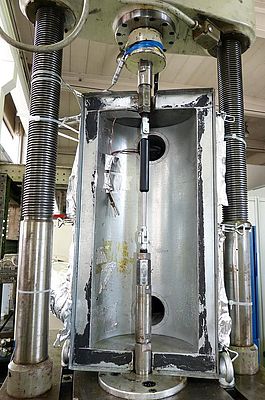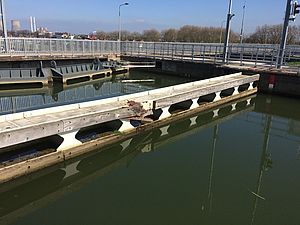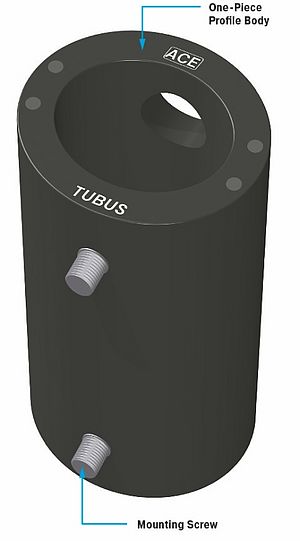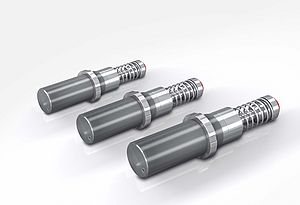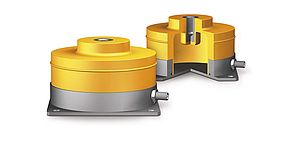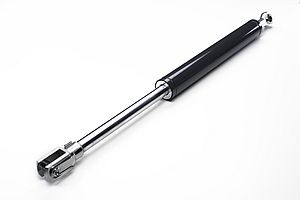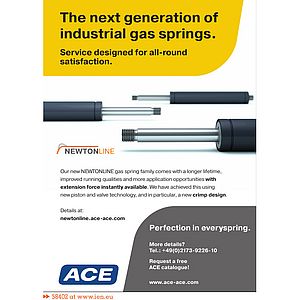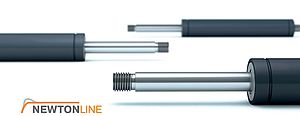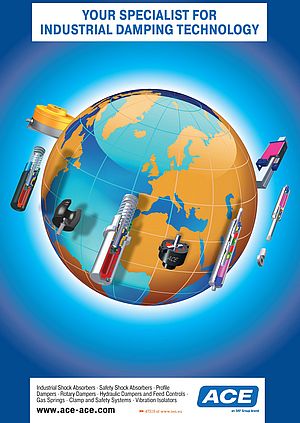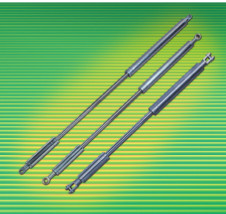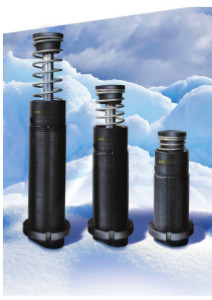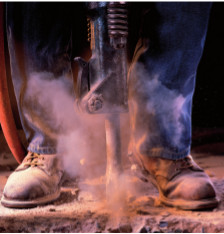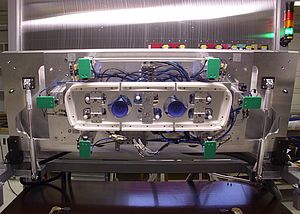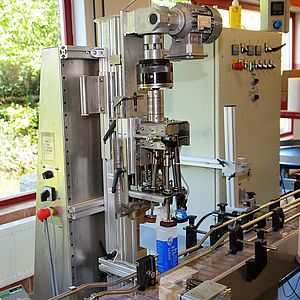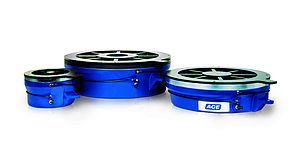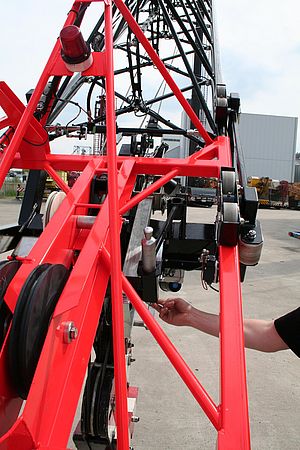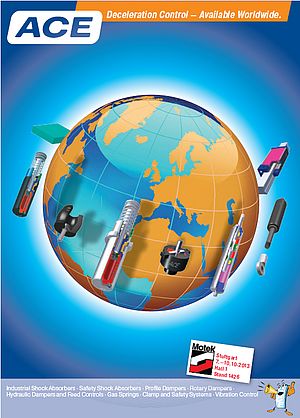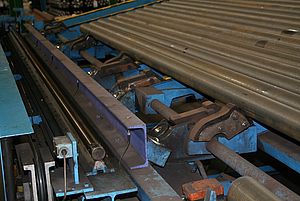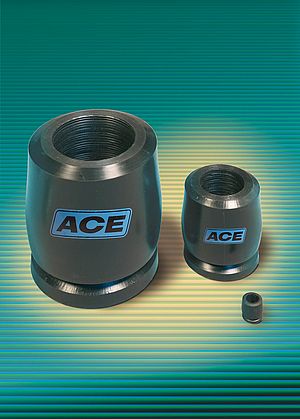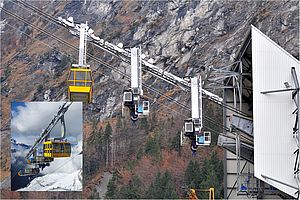The independent test institute Brunel Car Synergies has carried out a week-long high temperature test on special gas springs under dynamic loading conditions. The springs produced by ACE Stoßdämpfer (ACE Controls International), which were subjected to testing, delivered remarkable results.
Brunel Car Synergies which has its head office in Bochum belongs to Brunel GmbH located in the Bremen Airport City. The company ranks among the leading providers of engineering services in Germany and pools both its know-how and the experience of around 3,000 highly qualified engineers, technicians and managers. One of its services is solving complex problems along the entire process chain, beginning with the development phase, through construction, verification, prototyping, testing and last but not least management support. Tests for the automobile industry are always on the agenda, so it was not surprising that the Bochum company recently got the order to test five gas springs. After all, these machine parts are found in nearly all car boots, supporting the manual opening and closing of smaller and larger lids, hoods and flaps. Two conditions, however, made this case exceptional: the first aim was to test special gas springs for use under high temperatures. Secondly one of the manufacturers themselves commissioned the testing: "It doesn't really happen to us very often, that a company itself takes the initiative and requests comparative tests" says Dominik Rüther, project manager for these tests at Brunel's inspection and test centre in Bochum. ACE Stoßdämpfer GmbH decided to take this step because they are specialists for all sorts of damping solutions and convinced of the quality of their own products and they wished to have confirmation from a reputable source. For Dominik Rüther a pretty daring venture: "Irrespective of the fact that we commissioned the tests ourselves, we treated the matter objectively. Any other approach would ruin our reputation among our international partners". To be exact it was a question of testing the functionality of gas springs filled with pure nitrogen and oil and subjected to dynamic requirements."That makes sense, because greater differences as those occurring under static conditions are known to arise here. The strains affecting the gas springs are distinctly greater in this case" Rüther explained. In order to arrive at a well-founded statement about long-life durability the tests were applied for a maximum of 50 hours. In the end only four, and not five, specimens were tested, as the fifth one was not able to take part in the race, showing too much damage on the piston rod even before the actual loading phase began.
Test results speak for themselves
In order to achieve meaningful results during the test series Brunel Car Synergies GmbH ensured that the gas springs were heated to a constant temperature of 160°C in a temperature chamber. The specimens were mounted on counter supports by means of an adapter. At the same time all gas springs were subjected to the same loading in z-direction by a computer-controlled application of force. The loading was only to be aborted in the case of a breakage of the gas springs or a loss of power during the planned measurement of the characteristic curve up to a pressure load of 1.75kN. Soon after beginning testing, after the first load change, the gas springs which had not been provided by ACE no longer showed resistance. The sealing had already partly begun to slip out of the casing. With the remaining three ACE products the loss of power leading to an abort of the test only occurred after 3,000 cycles with one specimen, and with another after 5,000 cycles. A further ACE special gas spring with a particular sealing technique turned out to be the most robust with 10,000 cycles. Rainer Loh, product manager for industrial gas springs at ACE, is satisfied: "Taking into consideration that, strictly speaking, in this long-life durability test the 5,000 as well as the 3,000 cycles each actually consist of double strokes, the running performance, particularly within this range of temperature, is more than remarkable. We are especially proud that one of our special gas springs even managed 10,000 cycles.
Conclusion
Operators of gas springs, who value quality, particularly when they have to use them at high temperatures, can find the proper alternatives in the models of ACE Stoßdämpfer GmbH. Anybody who is interested in implementing such gas springs for as long as possible, even under dynamic conditions, can choose from a variety of suitable maintenance-free models in the ACE HT- range of gas springs. These models, which are equipped with a special sealing technique for use at high temperatures, are to be found at ACE with the type designation GS-15 to GS-40. Incidentally, the high quality of these damping solutions is not at the expense of their flexibility. The modifications of the models, which in comparison to standard gas springs, are not only heat-resistant but also withstand condensation and aggressive cleansing agents, come as gas pressure or gas traction springs. The gas pressure springs (push type) are available with a piston rod diameter of 6 to 20mm and cylindrical body from 15.6 to 40mm in diameter. The gas traction springs (pull type) range from a 6mm piston rod and 19mm cylindrical body to a 28mm piston rod in a 40mm body. In addition to this great variety of diameters for piston rods and bodies there is also a broad range of mounting accessories such as clevis forks, eye ends, angle joints, ball joints to name a few. In combination with ACE fittings practically all possible installation situations have been covered. This and the fact that the company in Langenfeld produces all gas springs in a stainless steel version is an indication of further quality characteristics in addition to the excellent test results of Brunel Car Synergies GmbH.



